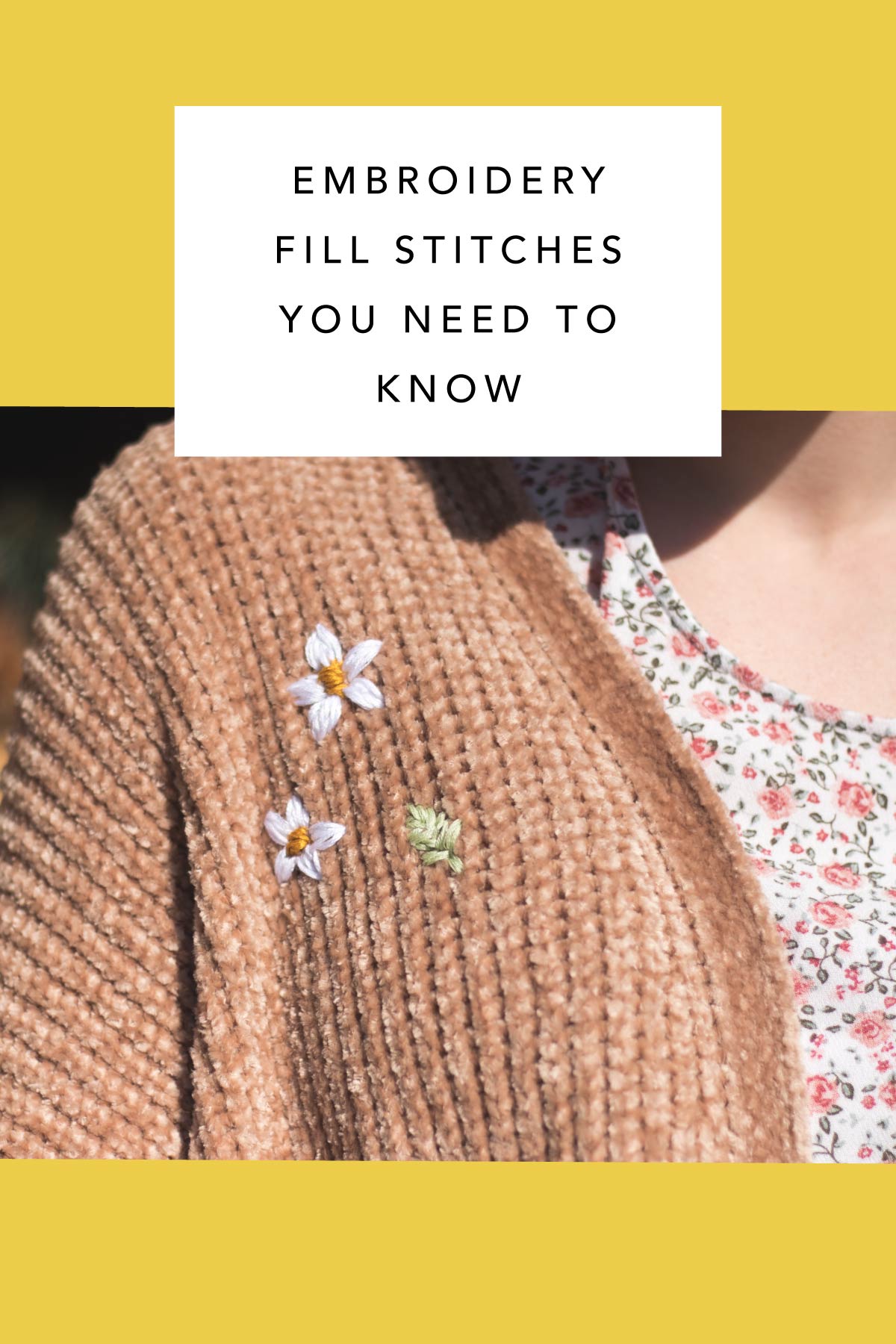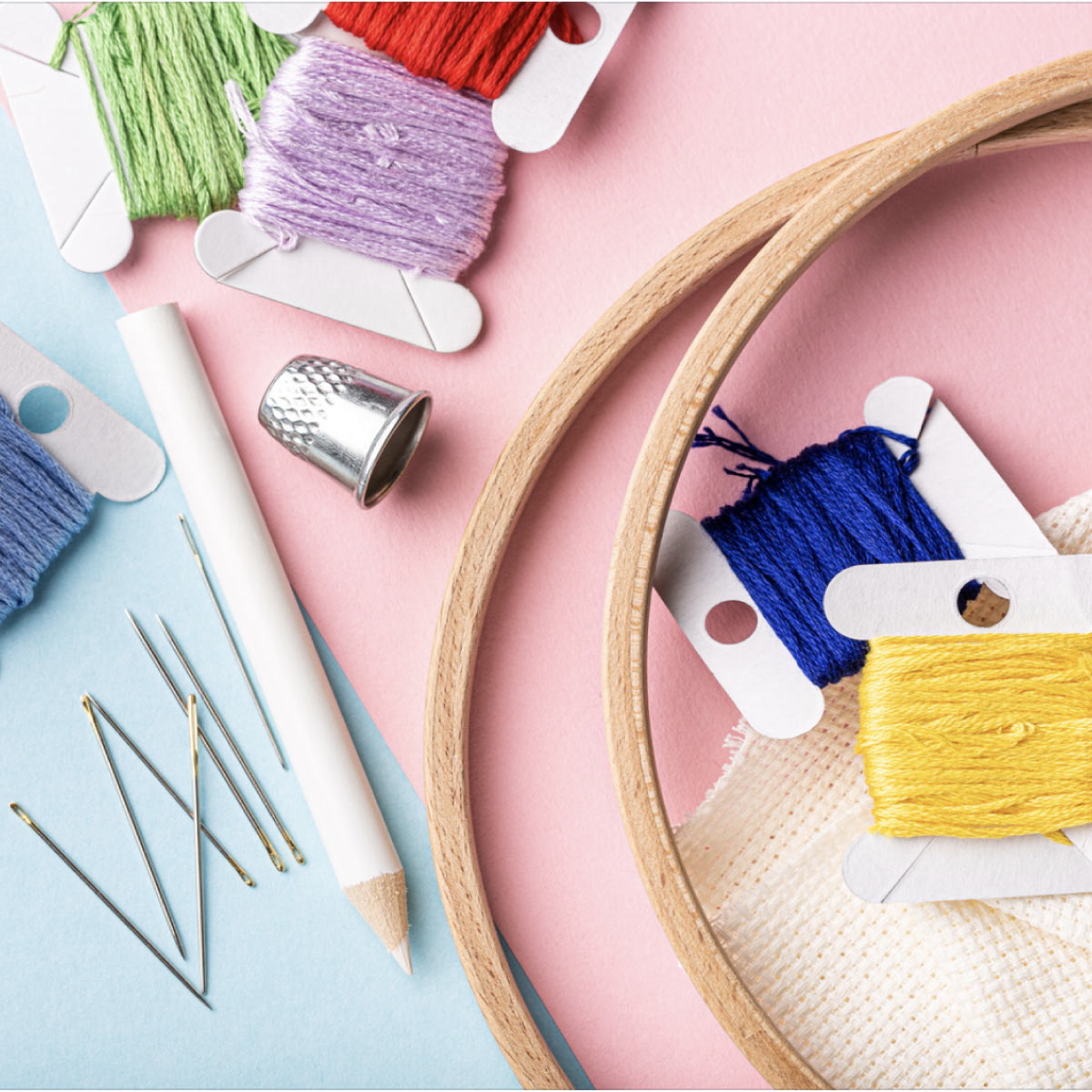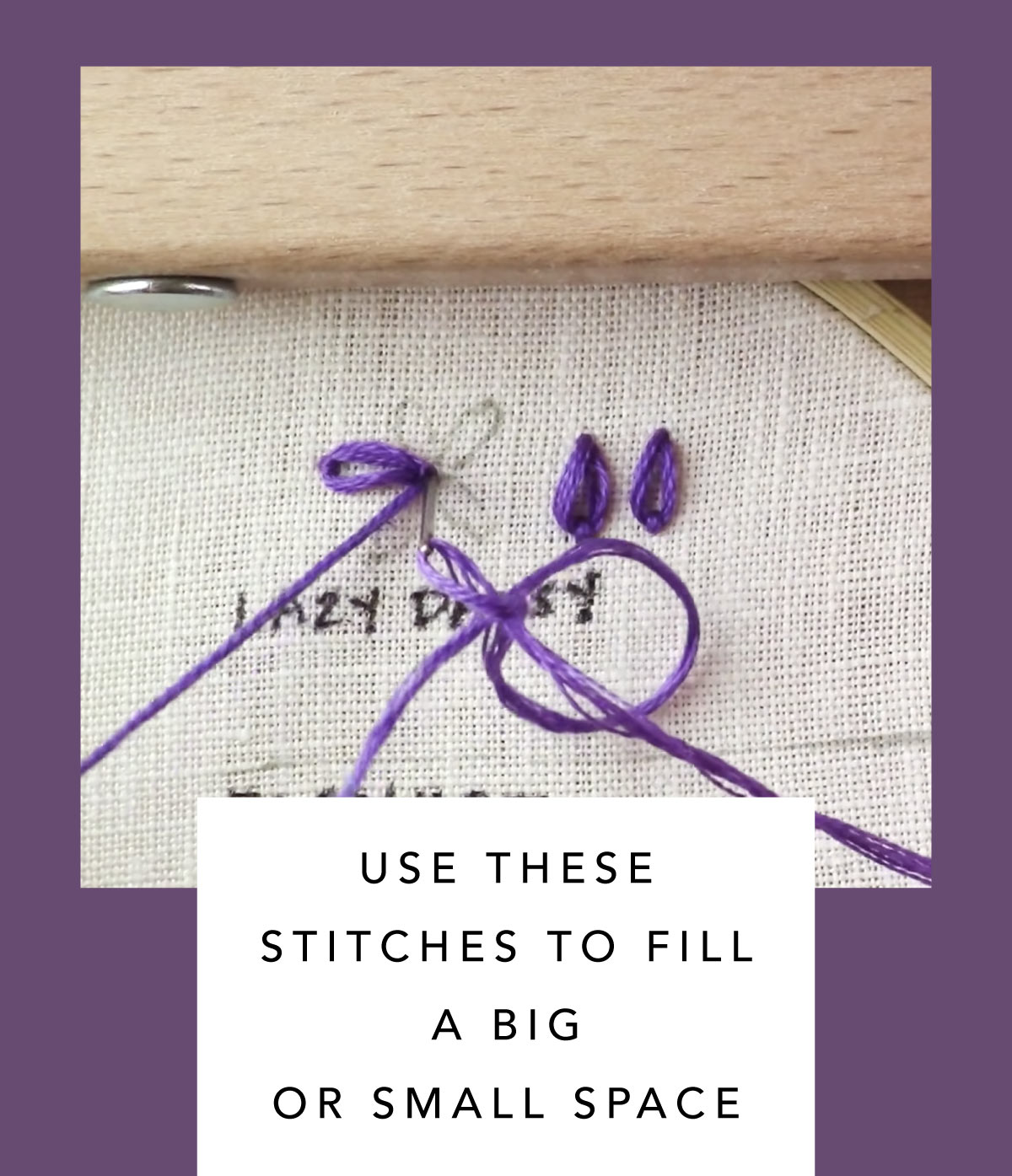As the name suggests, fill stitches are used to fill in areas of a design.
They can be used to create solid areas of color or to add texture and interest.
If you’re new to embroidery, fill stitches can be a little intimidating, but they’re actually not too difficult to learn.
When it comes to fill stitches, the most commonly asked question is, “What stitch should I use to fill this area?” The number of stitching types you can use to fill up a shape is almost endless. You can use satin stitch as a filling stitch for small areas, weave stitch for medium, chevron stitch for large elements, and even knots and line stitches for additional design and texture!
To further answer that question, I’ve rounded up 17 different embroidery fill stitches that can be effectively used in hand embroidery. This guide will teach you the filler embroidery stitches that you need to know.
Embroidery Fill Stitches For Small Areas
Small areas like pretty little flowers, leaves, and tiny fruits in your embroidery can turn out beautiful using these filler stitches!
- Satin Stitch – It is one of the most versatile and beautiful stitches around. You can use the satin stitch for filling in small or large areas of your embroidery. Make a row of straight stitches, then cover the area with a second row at a right angle. Begin stitching by going in from right to left, or vice versa. Keep the stitches straight, parallel, and close together, while making sure they don’t overlap.
- Fishbone Stitch – Normally used to embroider leaves, the stitches alternate coming from the left and right just like a fishbone. It’s a basic filling stitch that every embroidery artist should learn.
- Stem Stitch – Best known as a line stitch, stem stitch also makes a great filling stitch especially for narrow areas! You can use this as filler embroidery stitch for small areas or to cover up gaps after other stitches have been completed and removed. It’s also great for borders.
- Lazy Daisy Stitch – This is perfect for filling small spaces or adding a touch of embellishment to your designs. It works well for petals and flowers, and you can easily work it without a hoop or frame.
Embroidery Fill Stitches For Medium Areas
Fill in not too large but not too small or narrow areas such as medium-sized flowers and bushes using the following stitches:
- Weave Stitch – This filler embroidery stitch is a very interesting way to fill a medium-sized area. Weave stitch produces a texture that looks like a woven patch and adapts to many shapes. You can even opt for two colors!
- Split Stitch – You can use split stitch for patterns that involve outlining, but you can also embroider closely-packed lines of it for fill stitches, especially for medium areas of your embroidery project. When using split stitch as a fill, it is common to use two strands of embroidery thread or floss. It looks like a dashed line when it is stitched; the thread is split (hence the name) at regular intervals while stitching, creating small gaps in the finished design.
- Roumanian Couching – Basically, it is a satin stitch that is tacked down in a certain way. Hence, with this embroidery stitch you can cover larger areas than what the satin stitch can. It has a smooth surface stitch and works best for simple shapes but not for narrow areas.
Hand Embroidery Filling Stitches For Large Areas
To highlight large designs, you may opt to use these stitches asembroidery fillers.
- Chevron Stitch – A geometric embroidery filling stitch for large areas. If you look at the chevron stitch in hand embroidery, the stitch is simply a row of v shapes or zig zag with a little cross cap at each top and the bottom. Chevron stitch is a geometric stitch that adds interest and texture to your embroidery project.
- Long and short stitch – If you need to fill a large area with either solid color or subtle shading, the long & short stitch is a great technique! To do this hand embroidery filling stitch, the stitches of the first row are worked in such a way that they are alternately long and short.
- Popcorn stitch – A really easy stitch which is perfect for covering large areas quickly and easily, making it the perfect fill-in choice. You can even work it without a hoop or frame! To work, it is basically a series of tiny stitches that grow into small “popcorn” shapes when filled in.
Knots As Embroidery Fill Stitches
Feelin’ extra? Add texture to your embroidery using these knot stitches.
- French Knot Stitch – This is often used as an individual stitch, but when stitched closely together as filler, it creates an attractive, nubby texture for your embroidery. French Knot Stitch is made by wrapping the thread around a needle twice and inserting the needle close to where it came out. The wrapped thread is then pulled tightly, leaving a small bump.
- Danish Knot – This is a simple, stand-alone knot that can be used as a filing or decoration. To make a Danish Knot, you’ll use three points and wrap your thread around itself as you go. The most important thing is that you don’t tug too hard on your thread, or your shape will get distorted.
- Colonial Knot – Can’t make a French knot? Try a Colonial knot instead. It’s very similar to a French Knot, but instead of just wrapping the thread around twice, you make a figure 8 around the needle.
Embroidery Line Stitches To Fill Any Size
If you have different element sizes in your embroidery, you may want to explore these line stitches that work well for different areas.
- Chain Stitch – As an allrounder, the chain stitch is the perfect embroidery stitch for filling small areas and even larger ones. It is usually used for lines, but it can adapt to any shape and size! If you work it in rows or spirals, you can indeed fill out all kinds of shapes with it.
- Fly Stitch – A fly stitch is a basic embroidery stitch which you can do in singles, as a scattered filler, or in rows. It is useful for stitching different types of lines with cleaner and fewer stitches. This is a great stitch for adding textural interest to your designs. It can be worked in either lengthwise or crosswise rows, and can be used as a fill or border stitch.
- Feather Stitch – A versatile stitch that can be used for both borders and as a filler stitch in embroidery. If you already know how to do a fly stitch, learning how to do feather stitch shouldn’t be a problem. It’s basically a chain of fly stitches connected together. To create the fly stitch, work along four parallel lines making connecting fly stitches. The next stitch holds the previous one down.
- Woven Wheel Stitch – Also known as a spider wheel or wagon wheel stitch, woven wheel is an excellent stitch to create beautiful, dimensional flowers that you can make as big or as small as you want.
Bonus: 3 Intermediate Embroidery Fill Stitches
- Buttonhole Wheel Stitch – A pretty and versatile fill stitch that can be used to cover large areas quickly and easily. It looks like wheels when it is finished, and you can work it without a hoop or frame.
- Cross-Stitch Eyelet Stitch – A delicate and pretty stitch that is perfect for adding borders or highlights to your designs. Eyelets are simply embroidered holes in a pleasing arrangement and can be used on a wide variety of fabrics.
- Padded Satin Stitch – Also called the raised satin stitch, the padded satin stitch is a form of satin stitch, whereby the stitches are used to cover a number of small, isolated straight stitches in the design area. The result? A beautiful embroidered raised effect.
Now that you know these essential embroidery stitches, you’ll be able to add some beautiful details to your next project! Embroidery can seem daunting at first, but with a little practice, you’ll be able to create amazing designs that will add extra personality to any piece. So grab some fabric and get stitching!
More Pattern Ideas You’ll Love
- 30 Mushroom Embroidery Patterns – Mushroom embroidery is all the rage these days and it’s easy to see why! These patterns are just the right amount of cute and kitsch without being too over the top. There are also so many different mushroom varieties out there. You’ll never get bored with all of the options available!
- 35 Funny Embroidery Designs – Tap into your inner comedian with these funny embroidery designs! Who knew needlepoint could be so entertaining? Embroidery has made a comeback in recent years and with it has come some stitching ideas that are truly hilarious. Some of these designs even feature a couple of expletives. If you have sensitive family members (or kids) you may need to save those for a special, swear-word friendly occasion!
- 30 Festive Christmas Embroidery Designs – These Christmas embroidery designs are just the thing to get you into the holiday spirit. Have you started planning for Christmas yet? Maybe you’re a little late to the game and are here for some inspiration. Wherever you’re at in your preparations, these embroidery designs will help add a little cheer.



